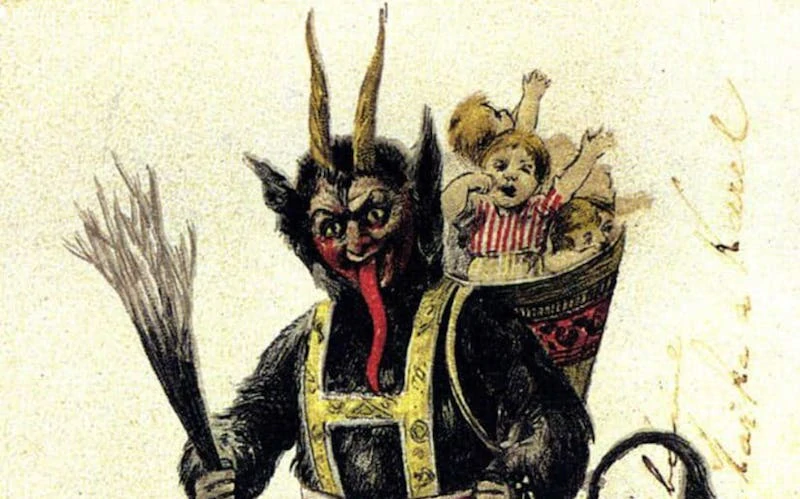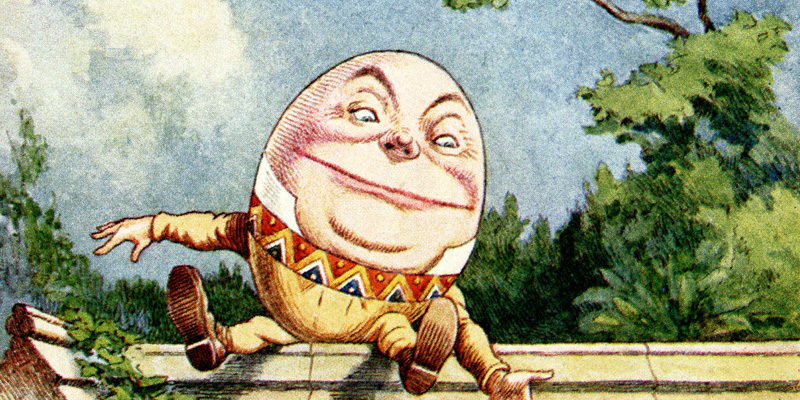Last updated on January 24th, 2023 at 10:55 pm
It is strange the traditions that survive over the centuries. For instance, most European countries and nations in the Americas continue to have a feast day around the last day of October or the first day of November every year.
These festivals, be they Halloween, the Day of the Dead, or All Saints Day, depending on which country one is in, all have their roots in Pagan beliefs about the death of nature as winter sets in. Christmas, the most universal of holidays in the modern world, is also rooted in Pagan belief systems.
Basically, the earliest Christians decided to make Christ’s birthday the 25th of December. In Roman times, this was Saturnalia, the winter solstice, and it would be a popular date to suggest as Christ’s birthday.
Another such survival amalgamated into the Christian calendar nearly two millennia ago is Krampusnacht, the Night of the Krampus.

Who is Krampus?
Krampus is a horned, anthropomorphic creature; its origins are found over two thousand years ago in the pre-Christian, Pagan societies of the central and eastern Alps in Switzerland, southern Germany, and western Austria.
Generally, Krampus is a devil-like character with cloven hooves for feet, the horns of a goat, fangs, wild eyes, and a long, pointed tongue. The monstrous creature is usually depicted as being covered in brown or black hair and of greater size than a human, up to eight or nine feet tall.
The Krampus is effectively a demonic creature that symbolizes the onset of the dark nights and the pressures of surviving in the cold Alps during winter.
This piece of Pagan supernatural belief was prevalent in this part of Central Europe when the Romans conquered the region in the late first century BC during the reign of Emperor Caesar Augustus.
It is probable that the Pagan people who inhabited this part of the Alps at the time, the Rhaetians, had already begun to associate the Krampus with the 5th and 6th of December and held a festival in which the Krampus featured heavily at this time of year.
This was the forerunner of the more modern Krampusnacht.
Krampus and, with it, Krampusnacht or the Night of the Krampus was, like so much else of the pre-Christian Pagan calendar, incorporated into the Christian faith in the centuries following the mass conversions of European people to become followers of Christ between the third and tenth centuries.
How did Christianity integrate Krampusnacht?
By the eleventh century, we find Krampusnacht intertwined with the Feast of St Nicholas in this part of Europe.
St Nicholas was an early Christian bishop of the late third and early fourth centuries AD who has become widely known for his gift-giving and other activities. Still, very little is known about the historical Nicholas other than that he was Greek and a major church figure of the early fourth century.
He is believed to have died on the 6th of December in 343 CE. As a result, his feast day became associated with Krampusnacht in the Alpine region, where the Krampus had been invoked around that day for centuries.
Because of the patchiness of early medieval records, it is difficult to assess how widely Krampus featured in the folklore of the Alpine region between the fifth and tenth centuries or how extensively Krampusnacht was celebrated during this shadowy period of history.
However, it must have been considerable, as we find horned, devil-like beings resembling Krampus featuring in plays being performed in wider parts of Central Europe by the eleventh century.
Krampus and Santa Claus
The Krampus had become associated directly with St Nicholas by this time, and we find a stereotype emerging whereby Krampus will punish bad children while St Nicholas rewards those who have been good.
At the height of the Middle Ages and into the early modern period, as festivals and carnivals became ubiquitous throughout Europe, Krampusnacht was widely celebrated in Austria and southern Germany on the 5th of December.
That evening some townspeople would dress up as Krampuses and wander the streets of these Alpine towns in a rite known as the Krampuslauf or ‘Krampus Run.’
During these, the Krampuses would dispense lumps of coal and bundles of birch known as Ruten to children deemed bad, whereas a figure representing St Nicholas would subsequently come along and dispense presents to those who had been good.
What is Krampusnacht like today?
Much like leaving out whiskey or some other drink for St Nicholas’s more popular alter-ego, Santa Claus, on the night of the 24th of December, it was common practice to offer Krampus schnapps, a distilled fruit brandy, to fend off their worst impulses.
Indeed the position of Krampus as a kind of anti-Santa Claus didn’t stop there. A tradition of distributing Krampuskarten or Krampus cards emerged in the late nineteenth century.
Today, Krampusnacht is still widely celebrated in the Alpine regions of southern Germany and western Austria. It is particularly prominent in the latter country, where Krampusnacht has become an annual national feast.
The tradition also extends to other regions, notably the American Midwest, where many people migrated from Central Europe in the late nineteenth and early twentieth centuries, bringing their Alpine traditions.
Thus, in Clintonville in, Ohio, there is a Krampus parade held annually on the 5th of December, and other towns and cities have begun to mimic the practice in recent years. As such, these most unusual Pagan survivals into the Christian era show no sign of disappearing soon.
Sources
Maurice Bruce, ‘The Krampus in Styria’, in Folklore, Vol. 69, No. 45 (1958); Al Ridenour, The Krampus and the Old Dark Christmas: Roots and Rebirth of the Folkloric Devil (Port Townsend, 2016).
Charles W. Jones, Saint Nikolaos of Myra, Bari and Manhattan: Biography of a Legend (Chicago, 1978).
Becky Little, ‘Meet Krampus, the Christmas Devil Who Punishes Naughty Children’, in History (December, 2018) at https://www.history.com/news/krampus-christmas-legend-origin


The author confuses Christianity with Catholicism (Roman paganism with new clothes), a very common mistake.
Christians don’t celebrate “Christmas” only because such celebration isn’t in the Holy Bible.
Catholics celebrate “Xmas” because they follow what the popes command. Simple as that.